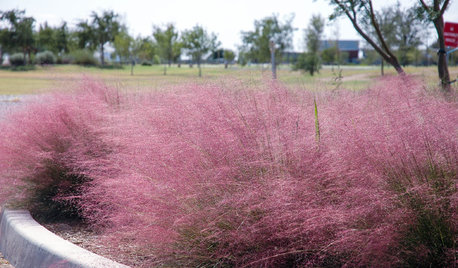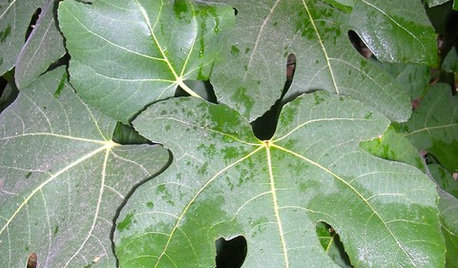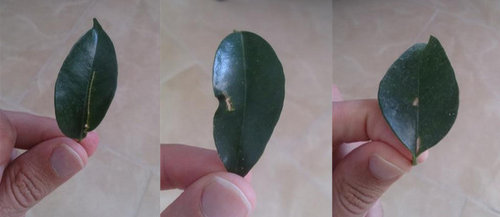Holes on Ficus Benjamina Leaves
adib_y
9 years ago
Related Stories

NATIVE PLANTS10 Top Plants Native to the Desert Southwest
Get a thriving garden despite unforgiving conditions with these tough, unthirsty, sun-loving beauties
Full Story
HOUSEPLANTSHow to Create an Indoor Landscape
Apply principles and elements of design to help your indoor garden flourish
Full Story
MOST POPULARThe Perfect Houseplant for People Who Kill Houseplants
If you can fill a jar with water, you can keep golden pothos vine happy — and it will pay you back with cleaner air and a greener home
Full Story
DECORATING GUIDES12 Home Furnishings for People on the Move
Even if you're not staying put in your current home, you can give it style and a sense of permanence with these pieces
Full Story
GARDENING AND LANDSCAPINGGrow a Lush Privacy Screen
No need to wait forever for patio privacy the green way. These 10 ideas will get your screening up and running in no time
Full Story
HOUSEPLANTS8 Essentials for Healthy Indoor Plants
Houseplants add so much to our homes — and can thrive when grown in the right conditions. Keep these tips in mind
Full Story
GARDENING GUIDESGreat Design Plant: Common Fig
A full form and delicious fruits make this Middle Eastern tree a favorite in gardens around the world
Full Story
HOUSEPLANTS10 Top Plants to Grow Indoors
Brighten a room and clean the air with a houseplant that cascades artfully, stretches toward the ceiling or looks great on a wall
Full Story
CONTAINER GARDENSHappy Houseplants, Happy People
Potted plants add life and beauty to a room. Learn easy ways to keep them healthy
Full Story
HOUSEPLANTS8 Houseplants You Can't Kill
They're forgiving and let you forget. Houseplants don't get any easier than this
Full Story








MsGreenFinger GW
adib_yOriginal Author
Related Professionals
Danbury Landscape Architects & Landscape Designers · South Orange Landscape Architects & Landscape Designers · White Oak Landscape Architects & Landscape Designers · Elgin Landscape Contractors · East Lake-Orient Park Landscape Contractors · Goodlettsville Landscape Contractors · Madera Landscape Contractors · Melrose Park Landscape Contractors · Ramsey Landscape Contractors · Rockwall Landscape Contractors · Stallings Landscape Contractors · Wethersfield Landscape Contractors · Yuba City Landscape Contractors · Clearfield Landscape Contractors · Wanaque Interior Designers & Decoratorsadib_yOriginal Author
tapla (mid-Michigan, USDA z5b-6a)
User
tapla (mid-Michigan, USDA z5b-6a)